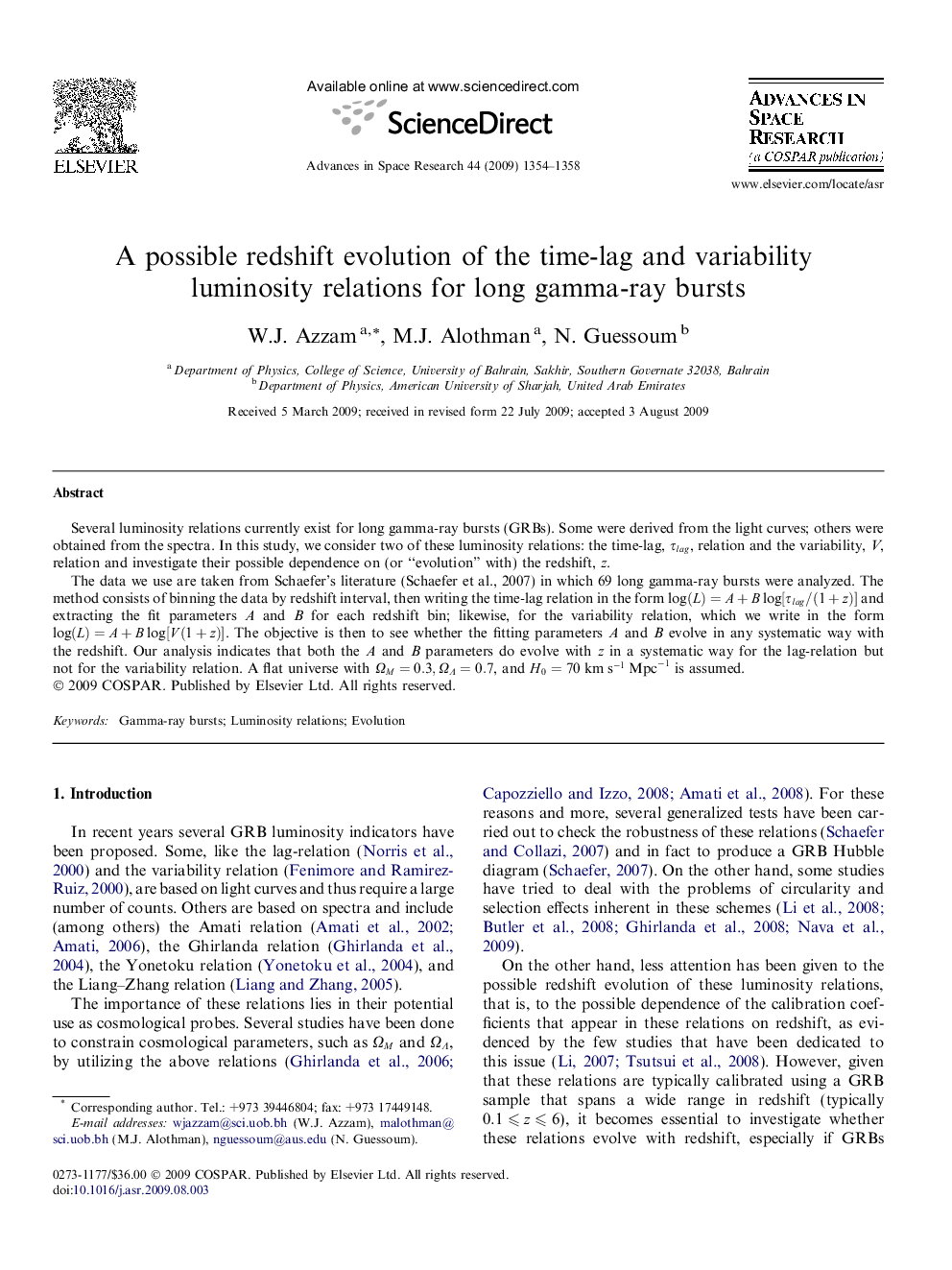| Article ID | Journal | Published Year | Pages | File Type |
|---|---|---|---|---|
| 1766472 | Advances in Space Research | 2009 | 5 Pages |
Abstract
The data we use are taken from Schaefer's literature (Schaefer et al., 2007) in which 69 long gamma-ray bursts were analyzed. The method consists of binning the data by redshift interval, then writing the time-lag relation in the form log(L)=A+Blog[Ïlag/(1+z)] and extracting the fit parameters A and B for each redshift bin; likewise, for the variability relation, which we write in the form log(L)=A+Blog[V(1+z)]. The objective is then to see whether the fitting parameters A and B evolve in any systematic way with the redshift. Our analysis indicates that both the A and B parameters do evolve with z in a systematic way for the lag-relation but not for the variability relation. A flat universe with ΩM=0.3,ΩÎ=0.7, and H0=70kms-1Mpc-1 is assumed.
Keywords
Related Topics
Physical Sciences and Engineering
Earth and Planetary Sciences
Space and Planetary Science
Authors
W.J. Azzam, M.J. Alothman, N. Guessoum,
